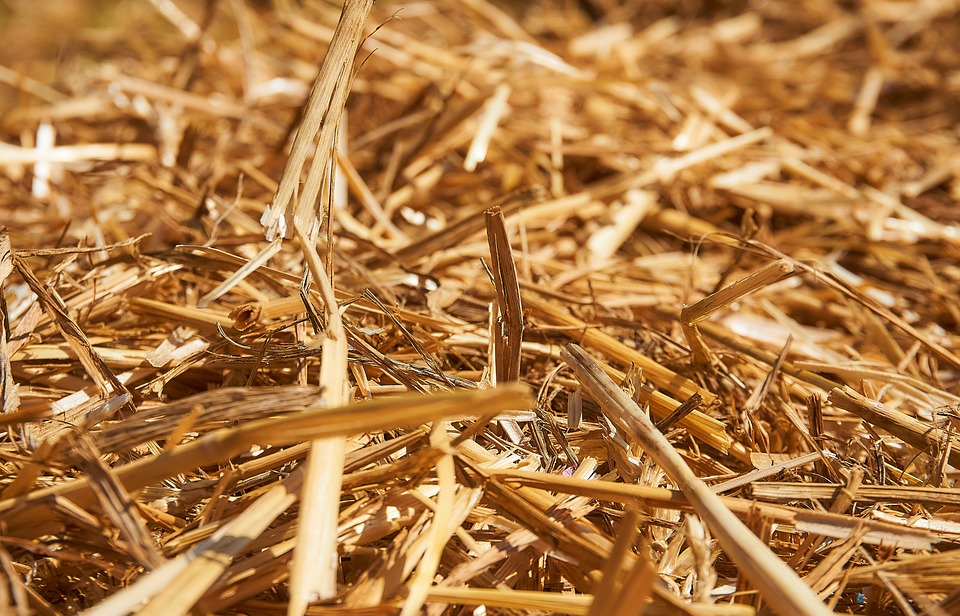
'Bailing' on Straw: Distinguishing Information from Knowledge ~ The "Why To"
Have you ever wondered why there is this underlying tension around grading and grades?
By Harold Bull, Dawn Giesbrecht, and Sheryl MillsPost 20 in the ongoing series, 'From Student to Researcher (in one term!)'
(This blog series is authored by USask denizens Harold Bull, Dawn Giesbrecht and Sheryl Mills) Harold is Assistant Professor Biochemistry, Microbiology & Immunology. Dawn is Laboratory Instructor Anatomy, Physiology and Pharmacology; Biochemistry, Microbiology and Immunology. Sheryl is Associate Director, Academic Programs & Interprofessional Education, USask Health Sciences)
Introduction
Have you ever wondered why there is this underlying tension around grading and grades? We certainly have…especially after experiencing a lack of that tension in our Curriculum-based Undergraduate Research Experience (CURE) course. In these courses, conversations with learners were about their research rather than on assessments, attendance or ultimately grades.
After writing many blog posts, giving a conference presentation, and facilitating several iterations of a CURE-based course, we think we have finally stumbled upon the crux of the matter. In the context of university education, there is a difference between information and knowledge. Confounding these two is at the root of the games often played around assessment, attendance, and grades.
For the purpose of this post, we define (1) information as data that is organized, transitory, and evolving, and (2) knowledge as information that has been ‘worked with’ (processed and refined), and “gathered through experience, training, learning or even practical understanding.”[1]
“Why To” K?[2]
We believe that information is the raw material—the straw—from which knowledge is processed or ‘spun’—resulting in the gold.[3] In our CURE course, learners, through their own efforts, gather and organize their own information. Through exploration, failure, and reflection they spin information (straw) into knowledge (gold!). Through this active process, they also develop skills, confidence, and that ‘certain something else’ that you know when you see it. For us, this ‘certain something else’ is learner (and instructor!) engagement, enthusiasm, collegiality, genuine interest, commitment, and no haggling over grades, policing for plagiarism, or enforcing attendance.[4]
Information is constantly changing, evolving, being declared ‘mis’, etc. Creating knowledge from information is an essential skill for learning and meaning making. Providing opportunities for learners to develop skills necessary to spin information into knowledge helps to ensure that our learners are better able to update their knowledge as information evolves—as information always does.
We all need opportunities to do something with information to create knowledge for ourselves. In our CURE course, learners are doing authentic research. In didactic courses, the instructors are the ones doing the work with the information.[5] When learners receive neatly packaged, polished products from instructors, it is simply still just “information”[6] for the learners. It is not until learners work with the information on their own (or with teammates) that this information becomes knowledge for them.
As we see it, our job as instructors, is to be more than just ‘spin doctors’ for learners. Our job is to provide opportunities for learners to put their spin on information, thus creating their own tapestry of knowledge. When instructors ‘save’ students from doing the work of generating their own knowledge, that ‘kindness’ is a disservice that obstructs active meaning making, learning, and engagement[7]. Following this logic[8], creating opportunities for learners to spin straw into gold, information into knowledge, is perhaps the largest and most important part of our role as instructors. As we have learned from our CURE course, exploration, discovery, and synthesis are central to active meaning making, learning and engagement, —and research.
Although someone else’s well-spun tale can provide novel information, it is not until learners start spinning for themselves that they integrate and synthesize information into their own meaningful and relevant knowledge. The gold is in the spinning[9]—and not in neat bales of prepackaged straw.
When we understand there is a difference between information and knowledge, the importance of learners working with information to create knowledge becomes evident. This threshold understanding has the potential to alter conversations fundamentally and traditional engrained practices related to learning, engagement, and assessment.
In the next post in this series, (1) we posit that it is time to bail on information-focused courses,[10] and (2) suggest ways to ‘cure’ courses so they include more spinning opportunities and appropriate assessments.
Previous Post in this series. All posts in this series.
Podcast on the CURE by Harold, Dawn, and Sheryl:
Podcast on the CURE from the MightyChondria student CURE team:
[1] Borrowed from https://askanydifference.com/difference-between-information-and-knowledge/
[2] For those of you that were not following the news prior to 2000 …Y2K was a turn of the century potential computer problem…that turned out to be a non-issue 🙄
[3] Borrowed from the classic fairytale Rumpelstiltskin, by the Brothers Grimm.
[4] In truth, our main ‘first world problem’ was that learners did not want to LEAVE the lab!
[5] i.e. they have made a series of slides, organized a lecture, written a lab manual, developed a narrative, etc.
[6] For the novice it may be just more “Blah blah blah… anyone? anyone? Bueller?”—a pile of dry straw. The expert, in real time, can quickly process information into knowledge, winnowing out unnecessary and irrelevant chaff—assuming interest in the presented information of course. 🙄
[7] From The pyramid of leisure - “the seeming fatigue caused by work is not the result of too much engagement, but too little of it — is in fact a manifestation of boredom”.
[8] We assume you have noticed some logic thus far … as you are continuing to read 😉
[9] The Constructivism theory of learning is like adding new information as “lego” pieces that must be joined to your brain’s world view before it becomes part of your knowledge.
[10] For both instructors and learners, the tension underlying grades may be based on confusing the value of information (straw) with that of knowledge (gold). This ultimately results in inappropriate assessments for/of knowledge.

